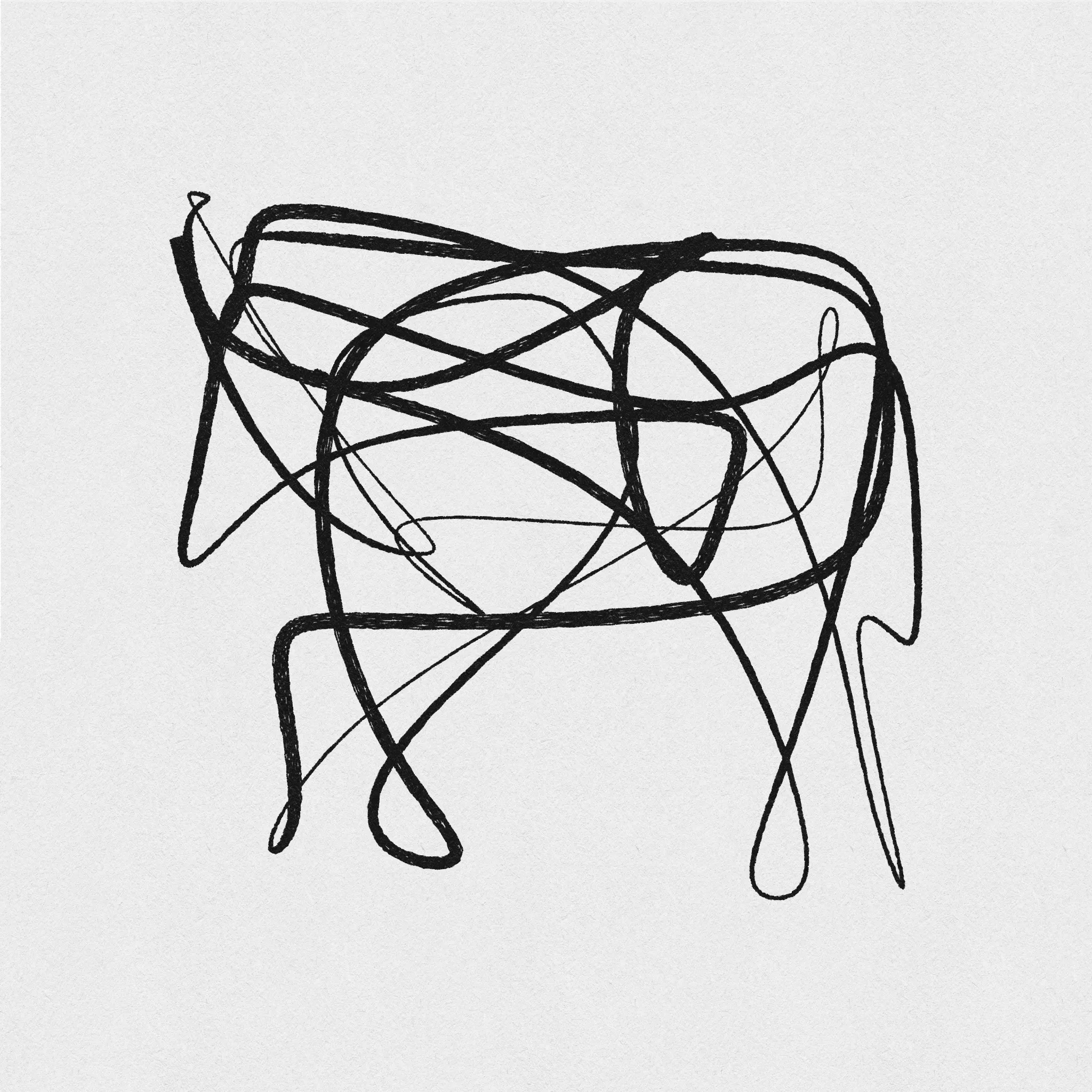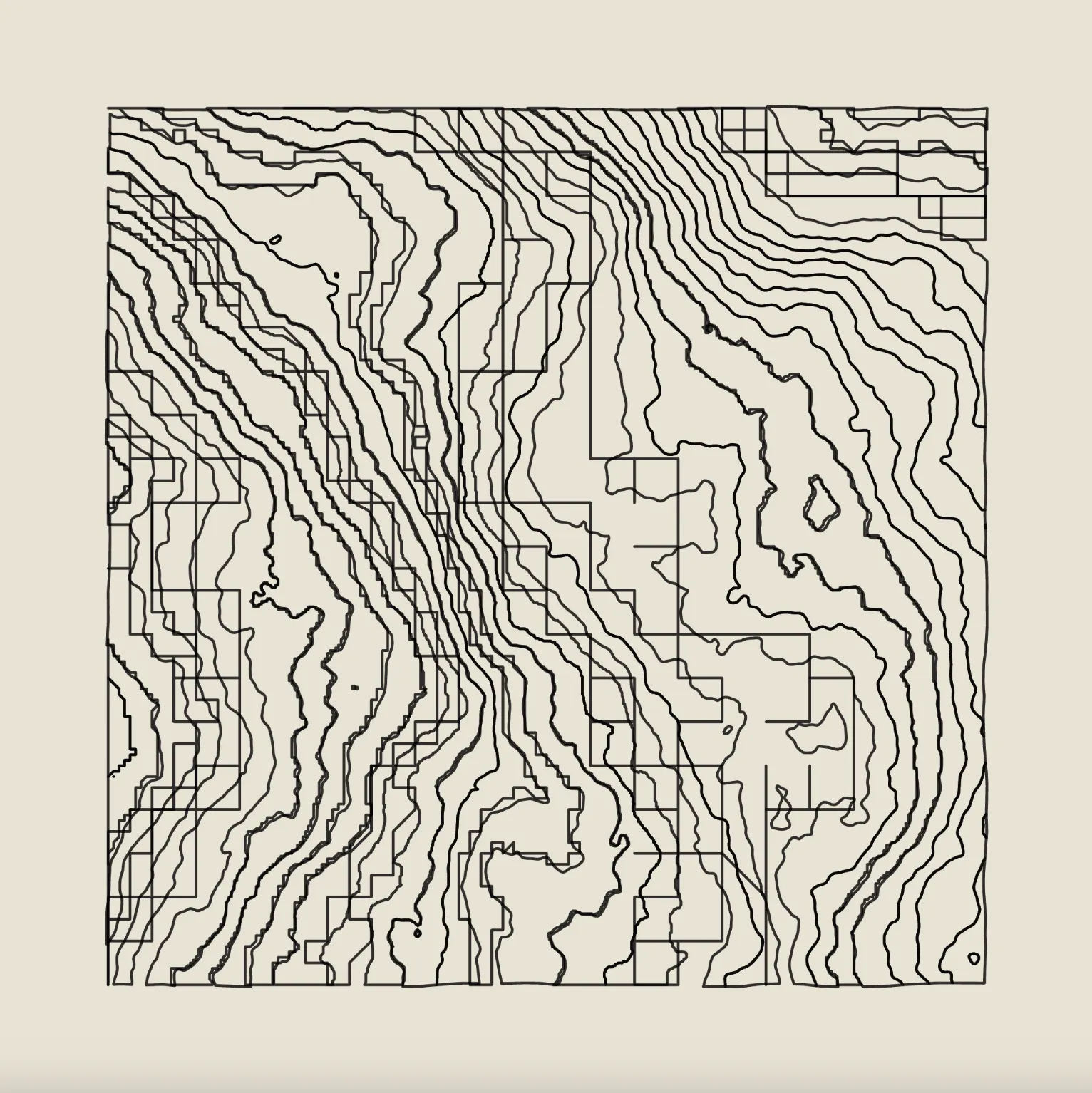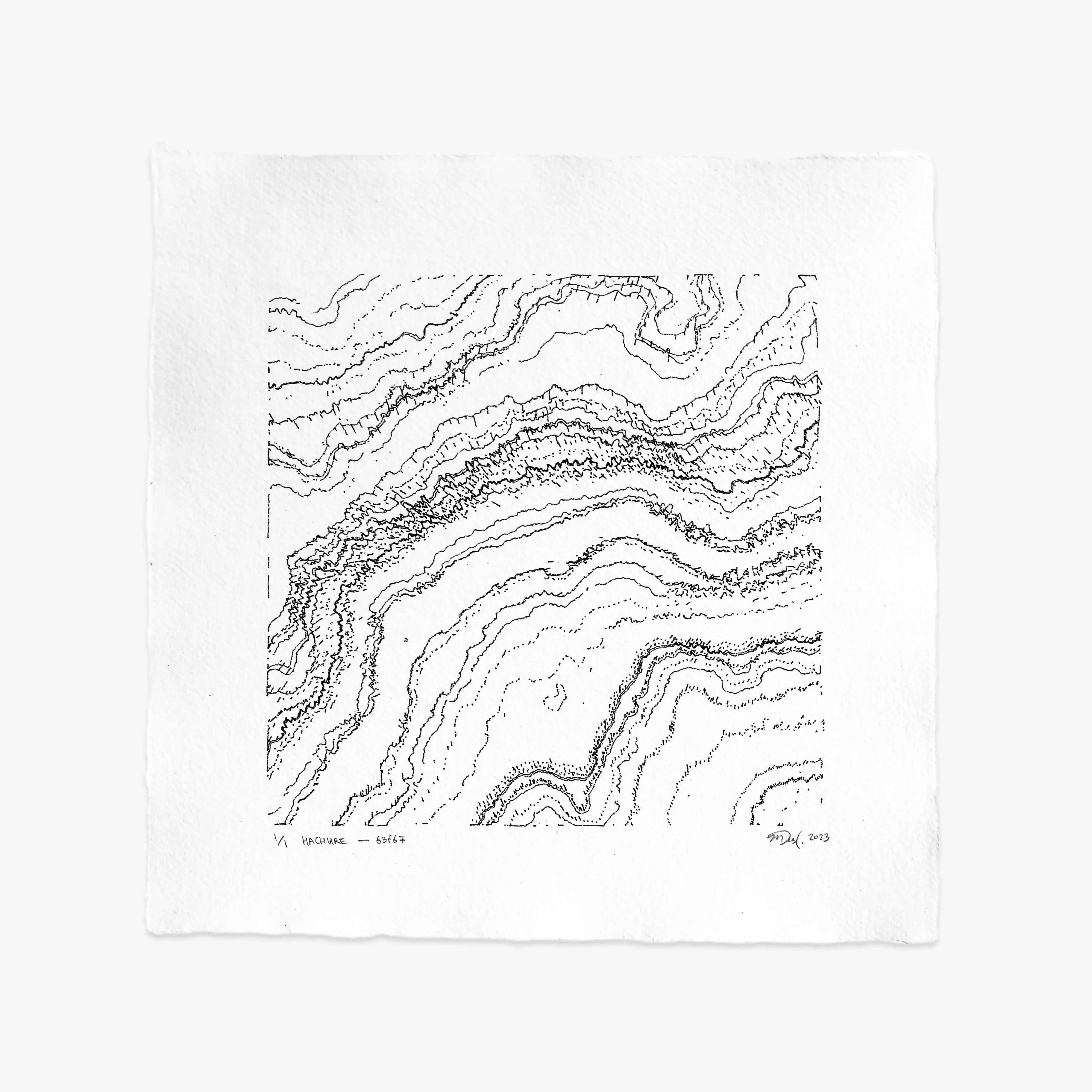5 unique plotter drawings
Mechanical pen plotter on handmade cotton paper
30 x 30 cm
Hachure continues DesLauriers’ exploration of maps, topography, and the geological processes that shape our world. The artwork takes its name from the cartographic term "hachure," which refers to the parallel lines used in map-making to represent terrain heights.
“It's a study of erosion and a study of landscape and the forms that it creates over many, many, thousands or millions of years where water and wind and other forces are acting on the earth's crust or the earth's terrain and producing these kind of intricate and beautiful results, which itself is a system. In some ways it's a bit of a continuation of my other works where it's thinking about terrain and about how do I take these computational systems and simulate natural process.” - Matt DesLauriers
This work is created with JavaScript, Zig, and a web browser. Special thanks to Nicholas McDonald for his educational articles and open source software on hydraulic erosion, which was invaluable while developing this project.
View series




